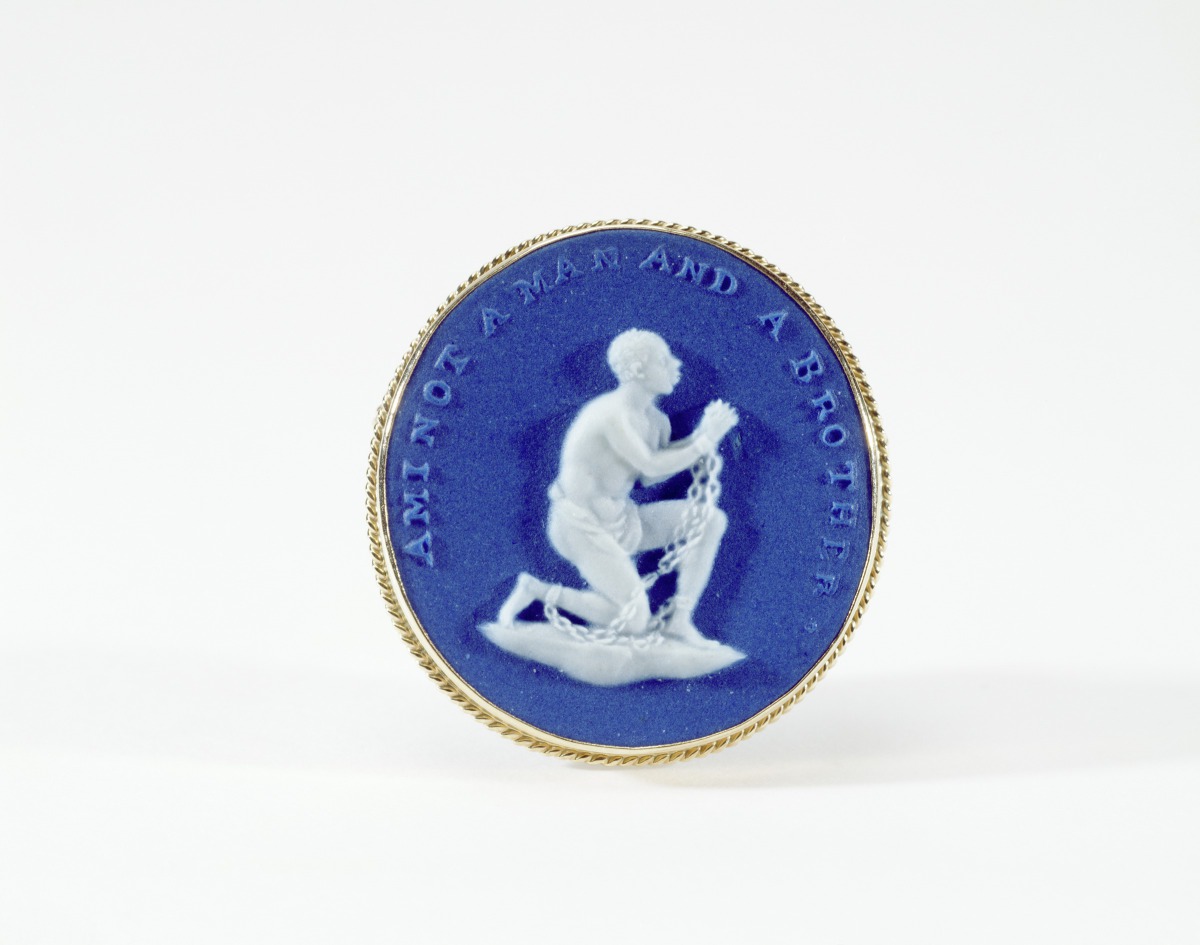
Anti-Slave Trade Medallion (Primary Title)
Henry Webber, English, 1754 - 1826 (Artist)
Wedgwood Factory, founded 1759 (Manufacturer)
William Hackwood, English, 1757 - 1839 (Modeler)
A few years before the Payne family of Goochland County, Virginia, sat for their portraits – including the nearby image of two brothers with their enslaved nurse – the London-based Society for Effecting the Abolition of the Slave Trade approved a powerful new emblem: a kneeling black man in chains who asks, “Am I Not a Man and a Brother?” Josiah Wedgwood, a prominent English ceramic manufacturer and Society member, produced the image as a jasperware cameo at his pottery factory.
In 1788, Wedgwood sent a shipment of medallions to Benjamin Franklin in Philadelphia, where the Society of Friends (also known as Quakers) promoted the abolitionist cause. During the following decades, the medallions became popular and persuasive political ornaments on both sides of the Atlantic. In abolitionist circles, they were variously framed, worn as pendants, and inlaid on snuff boxes.
Some object records are not complete and do not reflect VMFA's full and current knowledge. VMFA makes routine updates as records are reviewed and enhanced.

